The Candida Diet: What It Is & Foods To Eat And Avoid
A dietary approach to fight yeast overgrowth and relieve the associated infection.
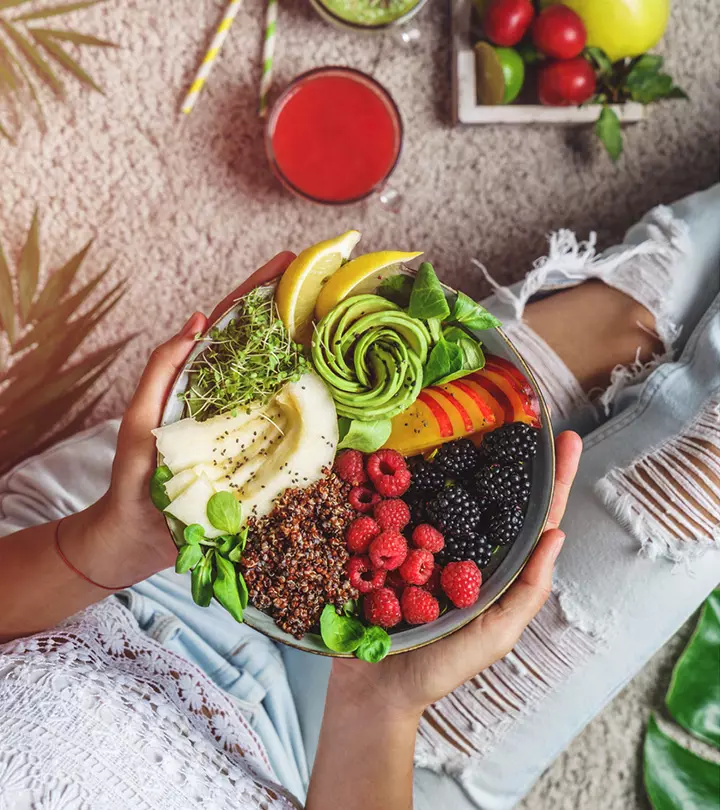
Image: Shutterstock
Yeast overgrowth in the gut can cause uncomfortable digestive issues. That is where the Candida diet can help alleviate them and improve overall gut health. Although Candida are natural residents of the human gut microbiotai A particular environment inhabited by a wide variety of microorganisms such as bacteria, fungi, and viruses. , their overgrowth creates an imbalance between the yeast and healthy bacteria in the body. This overgrowth is associated with gastrointestinal diseases, such as Crohn’s diseasei An inflammatory bowel disease of the digestive tract that is characterized by fatigue, abdominal pain, weight loss, and diarrhea. , inflammatory bowel diseasei A group of digestive disorders characterized by chronic inflammation of tissues in the gastrointestinal tract. , and ulcerative colitisi A chronic disease that causes ulcers, irritation, and inflammation on the inner lining of the large intestine. .
While the common course of treatment is prescription antifungal medications, some believe that an anti-Candida diet can be beneficial. Many people advocate for the diet’s effectiveness in regulating blood sugar levels and improving overall digestive health. Read this article to explore in detail the Candida diet, its merits and demerits, and its functions.
 At A Glance: Candida Diet
At A Glance: Candida Diet- Principle: Eliminates foods that promote yeast growth and encourages the intake of foods that may inhibit its overgrowth.
- Purpose: To alleviate symptoms of Candida-related health issues
- Who Is It For: Individuals with symptoms of Candida infections
- Duration: Short-term
- Who Should Avoid: Healthy individuals and pregnant and nursing mothers
- Cons: May cause nutrient deficiencies, extreme detoxification symptoms, and eating disorders.
In This Article
What Is The Candida Diet?
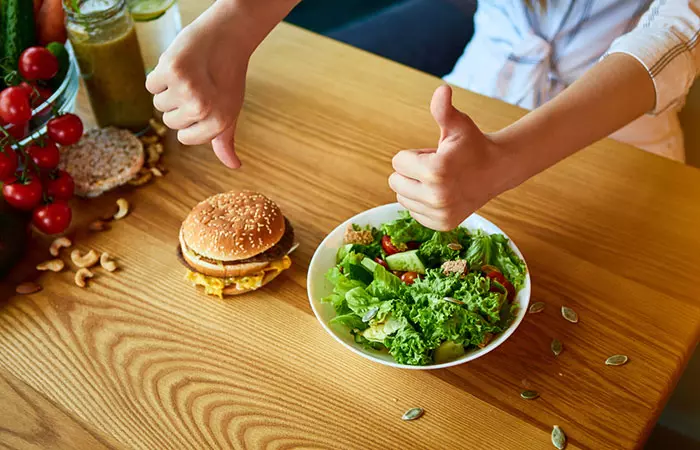
The Candida diet may be a potential treatment for health conditions associated with Candida overgrowth in the body. However, research supporting its efficacy is limited.
Since this diet targets yeast overgrowth, food items that encourage the spread of yeast, such as sugars and carbohydrates, are eliminated from the diet.
Instead, the emphasis is on consuming foods that have anti-inflammatory properties and improve gut health without irritating the gastrointestinal tract. The diet is customized as per the individual’s specific Candida-related condition to help create a healthy gut environment and restrain fungal infections (1).
According to the Centers For Disease Control And Prevention (CDC), candidemiai A common fungal infection where the Candida species are detected in the blood and has a high mortality rate. is one of the most commonly reported bloodstream infections in the United States (2). It estimates that about 25,000 candidemia cases occur per annum. Further, it may entail 3 to 13 days of hospitalization with $6000 to $29,000 in medical expenses, depending on the severity of the infection.
Candidemia is just one form of invasive candidiasisi A fungal infection caused by Candida overgrowth in the body and typically occurs on the skin or mucous membranes. that may also infect the bones, kidneys, heart, and other organs (2). Once detected, Candida overgrowth must be addressed immediately. The gravity of this condition has led people to do their own research and personalize an anti-Candida diet.
 Did You Know?
Did You Know?The following section explores how the Candida diet may help manage the spread of the yeast overgrowth.
Key Takeaways
- The Candida diet is designed to restrain Candida overgrowth in the digestive system.
- It may help manage candida-related health issues, improve digestive and immune functions, and aid in weight management.
- It eliminates refined carbs, gluten, high-glycemic foods, and sugary, processed, and junk food items that may facilitate Candida overgrowth.
- Long-term adherence to the diet may lead to nutrient deficiencies, extreme detoxification, and eating disorders.
How Does The Candida Diet Work?
The primary objective of this diet is to eliminate foods that might promote Candida overgrowth in the gut. Sugars, refined carbohydrates, high-glycemic foodsi Carbohydrates that are easily broken down and absorbed by the body and rapidly elevate blood sugar levels. , gluten, certain types of dairy, and processed foods are avoided or limited as they may encourage the spread of the yeast infection.
The diet includes low-sugar fruits, non-starchy vegetables, healthy fats, gluten-free grains, high-quality proteins, probiotic dairy, fermented (non-moldy) foods, non-caffeinated beverages, and other foods with antifungal properties.
Incorporating home remedies for yeast infection while following a Candida diet can help manage symptoms naturally and prevent recurring infections.
Note: This diet is not recommended long-term and may only be adopted as long as the Candida infection persists.
Now that we understand the basic idea behind this diet, let us look at a few of its potential benefits.
Benefits Of The Candida Diet
Although there is limited scientific research to support the beneficial effects of the Candida diet, many swear by its effectiveness. Here are a few ways this diet may help with Candida-related health concerns.
- May Manage Candida Overgrowth
The diet may help restrain the overspread of fungal infection to help manage Candida overgrowth.
- May Improve Digestive Health
The consumption of whole foods may result in a healthy gut microbiome that may improve digestive functions (3).
- May Improve Immune Health
Consuming probiotics may enhance the body’s immunity to combat future infections (4).
- May Enhance Energy Levels
Anecdotal evidence suggests that many feel less fatigued and more energetic while on the Candida diet.
- May Aid In Weight Management
The diet eliminates fattening sugars, refined carbs, and processed food, which may help in healthy weight management (5).
- May Improve Skin Health
Some proponents of the diet have reported experiencing glowing and clearer skin while also finding relief from acne and eczema symptoms.
- May Enhance Cognitive Functions
Many individuals have reported enhanced mental clarity, improved focus, and decreased brain fog while on this diet.
- May Reduce Inflammation
Consuming a diet rich in fruits, vegetables, nuts, herbs, spices, and legumes that contain anti-inflammatory elements such as omega-3 fatty acids, polyphenols, vitamins, essential minerals, and probiotics creates a positive brain environment and is linked to a lower risk of neurological diseases. The Candida diet includes many fruits, vegetables, herbs, and spices rich in anti-inflammatory elements such as omega-3 fatty acids and probiotics (6). These may help reduce inflammation in the body and alleviate related symptoms, paving the way for a healthier you.
 Trivia
TriviaOne of the naturally following consequences of the Candida diet is weight loss due to the elimination of fattening food groups. But is this weight loss healthy? Let us explore in the section below.
Can The Candida Diet Aid In Weight Loss?
The Candida diet is not intended for weight loss. However, dropping food groups that encourage weight gain may contribute to natural weight loss. The following factors may potentially aid in weight management.
- May Reduce Calorie Consumption
High-calorie foods like sugars and processed and deep-fried foods are not allowed on this diet, which may lead to weight loss.
- May Curb Appetite
Refined carbs tend to increase blood sugar (7). This blood sugar spike may increase hunger pangs (8). This diet restricts carbohydrate intake, thus possibly curbing your appetite.
- May Reduce Bloating
The elimination of sugary and junk foods may decrease bloating and constipation and create the sensation of feeling lighter (9).
- May Improve Metabolism
The consumption of whole foods may encourage a gut cleanse and healthy microbiome (10). This can enhance metabolism and lead to better weight management (11).
- May Support An Active Lifestyle
This diet may improve energy levels and reduce fatigue, which may consequently encourage more physical activity and calorie expenditure.
The above-mentioned points suggest that weight loss with the candida diet may be theoretically possible. However, the diet is not recommended for weight loss as it lacks adequate nutrition.
Also, as we saw, this diet’s primary focus is to help treat the yeast infection. It allows specific foods that help with this. We have listed these foods in detail in the next section.
Foods To Eat On The Candida Diet
The basic idea of this diet is to eat foods that help control Candida overgrowth without irritating the gastrointestinal tract. The following foods are generally allowed:
- Proteins: Lean poultry, wild-caught fish, and eggs
- Low-Sugar Fruits (In Moderation): Green apples, avocados, kiwis, grapefruits, guava, and berries
- Non-Starchy Vegetables: Leafy greens (spinach, lettuce, kale, etc.), cruciferous vegetables (cauliflower, cabbage, broccoli, arugula, etc.), cucumbers, bell peppers, and other low-carb vegetables
- Healthy Fats: Unrefined coconut oil, extra-virgin olive oil, olives, sesame oil, and flax oil
- Herbs And Spices: Ginger, garlic, rosemary, thyme, oregano, and other anti-fungal herbs and spices
- Nuts And Seeds (In Moderation): Almonds, hemp seeds, chia seeds, walnuts, and other non-moldy nuts and seeds
- Probiotics: Yogurt and kefir made from unsweetened coconut milk, sauerkraut, kimchi, etc.
- Herbal Teas: Tea brewed from chamomile, ginger, peppermint, hibiscus, sage, and other herbs
 Did You Know?
Did You Know?Now that we know what foods are allowed on the Candida diet, let us also look at the foods you must avoid.
Foods To Avoid On The Candida Diet
The following foods may worsen the spread of Candida and, hence, are avoided on this diet.
- Sugars: Any form of sugar and sweet ingredients like honey and maple syrup
- Refined Carbohydrates: Refined flour, white bread, white pasta, white rice, and food made from refined grains
- Processed Food: All processed foods, as they have hidden sugars and additives
- High-Sugar Fruits: Bananas, mangos, grapes, and dried fruits like raisins
- Starchy Vegetables: Potatoes, beans, peas, and corn
- Dairy Products: Most dairy products, as they promote yeast growth (12)
- Moldy Foods: Fermented foods that may get moldy, like cheese, vinegar, and pickled meats
- Caffeine: Coffee and caffeinated drinks
- Alcohol: All types of alcohol, as they can feed Candida and damage gut health
Keeping in mind the list of foods to avoid or include can be a challenge. So, to make things easy for you, we discuss a sample candida diet meal plan in the next section. Take a look.
Sample Candida Diet Meal Plan
Find below a sample 7-day Candida Diet meal plan.
| Day | Early Morning | Breakfast | Mid-Morning Snack | Lunch | Evening Snack | Dinner |
|---|---|---|---|---|---|---|
| Monday | 1 glass of warm lemon water without sweeteners | 1 glass of green smoothie with leafy greens, avocados, and almond milk | 1/2-3/4 cup of non-dairy Greek yogurt | 1 cup of stir-fry cauliflower rice and a plain omelet made from 2 eggs | 5-6 celery sticks with 2-3 tablespoons of almond butter | 113-170 grams of beef and vegetable kebabs with 1 cup of mixed-green salad |
| Tuesday | 1 cup of peppermint tea | 2-3 almond flour pancakes with 1 cup of berries | 75-100 grams of sliced apples sprinkled with cinnamon powder | 113-170 grams of grilled chicken with 1 cup of steamed vegetables | 75-100 grams of bell pepper slices with guacamole | 1 cup of zucchini noodles |
| Wednesday | 1 glass of warm water with 1 tablespoon of apple cider vinegar | 1 vegetable-loaded omelet made from 2 eggs and 1/2 cup of vegetables | 1/2 cup of mixed berries | 1 cup of zucchini noodles with homemade pesto sauce | 10-12 unsalted raw almonds and walnuts | 1/2 cup of quinoa with 113-170 grams of grilled chicken and 1/2 of cup of steamed vegetables |
| Thursday | 1 cup of ginger tea | 1 cup of chia pudding made using almond milk | 20 grams of sugar-free coconut chips | 113-170 grams of baked salmon with 1/2 cup of sauteed asparagus | 6-10 plain olives | 1 cup of stir-fry cauliflower rice with 113-170 grams of baked salmon |
| Friday | 1 cup of chamomile tea | 2 scrambled eggs with 1 cup of sauteed veggies | 6-10 gluten-free crackers | 1 bowl of quinoa salad with 1/2 cup quinoa and 2 cups of veggies | 1-2 strips/slices of sugar-free meat jerky | 113-170 grams of pan-seared tuna steak with 1 cup of sauteed spinach and garlic |
| Saturday | 1 glass of diluted aloe vera juice | 1/2 cup of non-dairy yogurt with 1/2 cup of strawberries | 1/2 cup of cucumbers with hummus | 1 bowl of tuna salad with 4-6 ounces of tuna and 2-3 cups of mixed greens | 1/2 cup of mixed berries | 113-170 grams of grilled steak with 1/2 cup of mixed greens |
| Sunday | 1 cup of cinnamon and turmeric tea | 55-85 grams of smoked salmon and 1 diced avocado | 1-2 slices/strips of sugar-free meat jerky | 1 bowl of spinach and kale salad with 1/2 cup of shredded chicken | 1/2-¾ cup of non-dairy Greek yogurt | 1/2 cup of shrimp and vegetable curry with 1 cup of stir-fry cauliflower rice |
Note: Always consult your doctor before starting the Candida diet, especially if you are pregnant, breastfeeding, or have an existing health condition. They can help tailor the diet to your specific health needs, identify any potential risks, and ensure it provides balanced nutrition.
You can customize the Candida diet as per your food tolerances and preferences as long as it does not facilitate Candida overgrowth. On that note, we have listed a few simple anti-Candida recipes that you can incorporate into your meal plans.
Candida Diet Recipes
Try and experiment with these delicious recipes for a wholesome Candida Diet experience.
1. Cauliflower Rice Stir-Fry
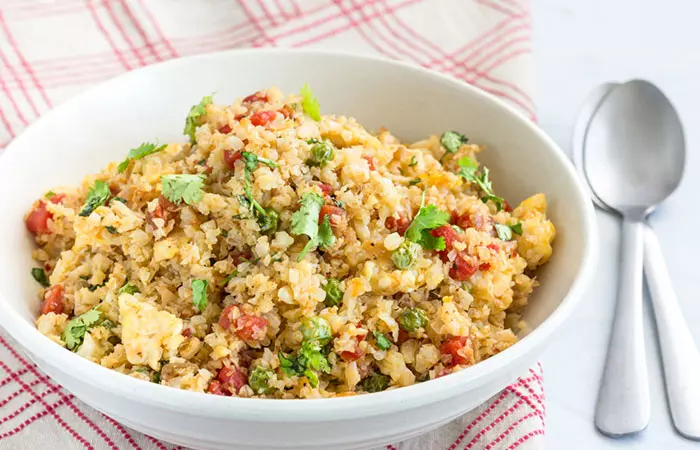
Ingredients
- 1 grated cauliflower head (acts as a rice substitute)
- 2 cups of mixed vegetables (cucumber, bell peppers, tomatoes)
- 2 tablespoons of coconut aminosi A dark and thin sauce made of coconut sap that tastes similar to soy sauce and may be substituted as such.
- 1 tablespoon of olive oil
- 1 tablespoon of minced ginger
Preparation Time:
20 minutes
How To Prepare
- Heat the olive oil in a large pan over medium-high heat.
- Add minced ginger and saute for about a minute.
- Add the mixed vegetables and stir fry for 3-4 minutes.
- Add the coconut aminos and the grated cauliflower and mix well.
- Continue cooking for another 3-4 minutes.
- Serve hot.
2. Baked Chicken Thighs
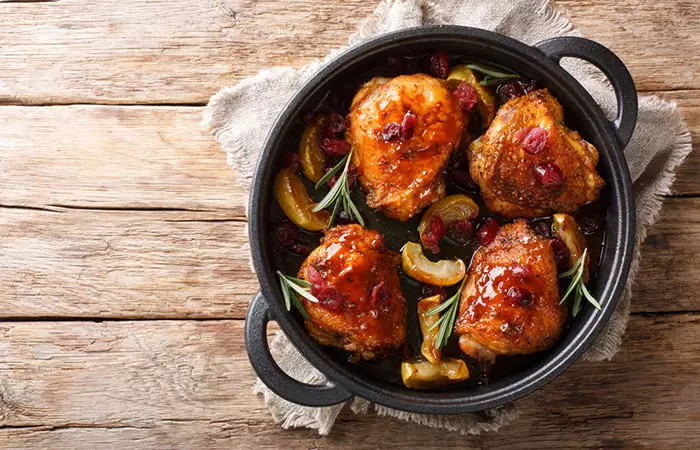
Ingredients
- 4 bone-in, skin-on chicken thighs
- 2 tablespoons of olive oil
- 1 teaspoon of dried rosemary
- 1 teaspoon of dried thyme
- 1 teaspoon of dried oregano
- Salt and pepper to taste
Preparation Time:
40 minutes
How To Prepare
- Preheat the oven to 375°F (or 190°C).
- Mix all the seasoning ingredients (rosemary, thyme, oregano, salt, and pepper) together in a bowl.
- Generously rub the chicken thighs with olive oil and the mixed seasoning on all sides.
- Place the chicken thighs in a baking dish and let it bake in the oven for 30-35 minutes until the chicken skin looks crispy.
- Serve with a side of sauteed vegetables.
3. Tuna And Avocado Salad
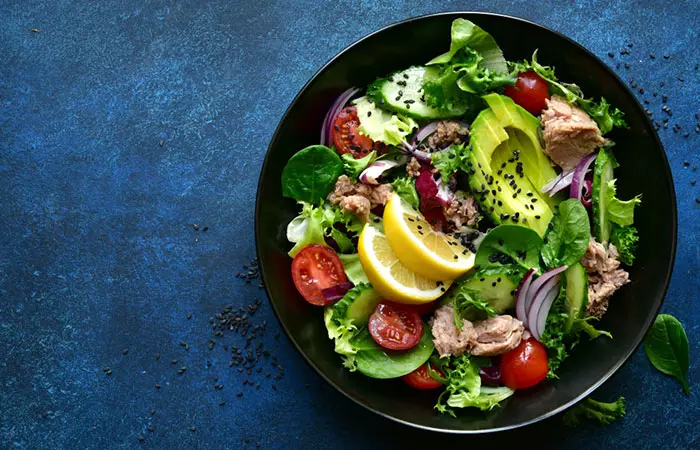
Ingredients
- 2 cans of tuna with the water drained
- 2 diced ripe avocados
- ¼ cup of sliced red onions
- 3-4 halved cherry tomatoes
- Juice from 1 lime
- ½ cup of leafy greens
- ½ cucumber, sliced
- 1-2 tablespoons of fresh, chopped cilantro (optional)
- 1 teaspoon of roasted sesame seeds (optional)
- Salt and pepper to taste
Preparation Time:
15 minutes
How To Prepare
- Add the greens, cucumber, onions, tomatoes, and tuna in a large bowl.
- Add the lime juice, salt, and pepper, and mix all the ingredients.
- Plate the salad. Arrange the diced avocado and cilantro, and sprinkle the sesame seeds as garnish before serving.
4. Zucchini Noodles With Pesto
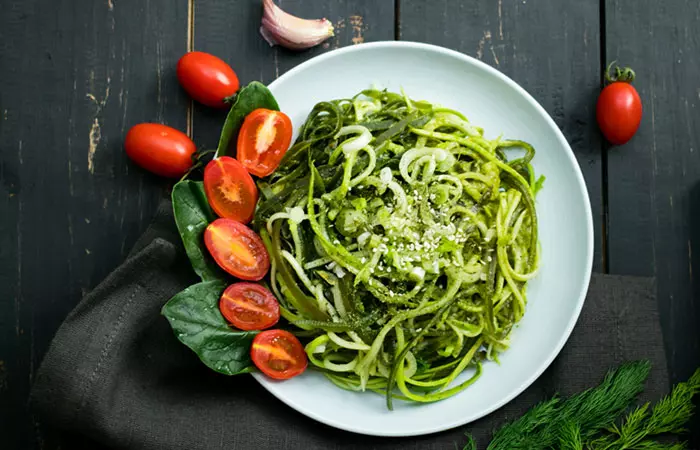
Ingredients
- 2 large zucchinis
- ½ cup of fresh basil
- 2 garlic cloves
- ¼ cup of pine nuts
- ¼ cup of olive oil
- Juice from 1 lemon
- Salt and pepper to taste
Preparation Time:
15-20 minutes
How To Prepare
- Blend the basil, garlic, pine nuts, olive oil, lemon juice, salt, and pepper in a food processor till you get a smooth pesto sauce.
- Spiralize the zucchini using a spiralizer, box grater, or mandoline slicer to make your zucchini noodles.
- Saute the zucchini noodles in a large pan for 2-3 minutes until slightly soft.
- Add in the pesto sauce and toss the noodles for a minute.
- Garnish some cherry tomatoes and spinach if desired.
You may experiment with your preferred toppings and seasonings with the given recipes as long as they are anti-Candida.
So far, we have discussed the potential benefits of the Candida diet. However, long-term adherence to this diet may also have negative effects on your health. Learn more about these in the next section.
Disadvantages Of The Candida Diet
The Candida diet is a short-term diet plan and must be followed as long as a Candida-related infection persists. Long-term adherence may have a detrimental effect on your health. This diet is not backed by research and still remains a topic of debate among medical experts. Hence, be aware of its potential drawbacks.
- While this short-term diet plan that lasts as long as the infection (2 days to 2 weeks) may not severely impact your health, there is no guarantee that it will alleviate its symptoms either.
- The restrictions on multiple vitamin- and mineral-rich fruits and vegetables may lead to nutrient deficiencies.
- Some individuals may feel a sense of deprivation due to its restrictive nature.
- People may also get bored of the diet due to a lack of variety and options.
- Following this diet in social settings is challenging as the restricted food types are commonly-used ingredients and their use cannot be monitored.
- Some individuals may experience extreme detox symptoms like fatigue, headache, and digestive issues.
- Some may also develop unhealthy eating habits, including the need to constantly check what they are eating.
- The Candida diet is complex for those unfamiliar with nutrition concepts, labels, and terminology.
Infographic: Candida Diet: Foods To Eat And Avoid
The Candida diet can seem overwhelming and complex. Multiple food groups are eliminated from the diet, while there are also exceptions within the eliminated groups. But fret not – as in the engaging infographic below we have made a simple list of foods to eat and avoid on this diet. This can help you plan your meals better and track your food intake.

Illustration: StyleCraze Design Team
The Candida diet is designed to inhibit the spread of the Candida yeast in the gastrointestinal tract during a related infection. It eliminates food groups that may further aggravate the infection and creates a gut environment that inhibits Candida overgrowth. Although this diet is slowly gaining widespread popularity, its efficacy is yet to be scientifically proven. The benefits of this diet remain a topic of debate among science and medical professionals. Further, this diet is also personalized and its effects may vary from individual to individual. That said, short-term adherence to the diet may not show significantly notable results, except for a potential detox. If you have existing medical conditions or are unfamiliar with diet and nutrition concepts, consult a doctor before trying this diet.
Frequently Asked Questions
Is the Candida diet suitable for everyone?
No. The Candida diet is recommended only when an individual is experiencing Candida overgrowth and related health conditions. There are complex food rules that are not based on solid research. Therefore, this diet is not for everyone.
Can I eat sweet potatoes on the Candida diet?
No. All starchy foods and vegetables are not allowed in this diet as starch may promote yeast overgrowth (13).
Can I eat oatmeal on the Candida diet?
Yes. Oatmeal is allowed as it is considered an antifungal food that may ease related infections (14). Just ensure that the oatmeal is not the commercial sugary or gluten variety.
What bread can I eat on the Candida diet?
Yeast-free bread types are allowed. You can opt for bread made of coconut flour, almond flour, flaxseed, or mixed seeds as they do not support yeast growth.
Which nuts to avoid on the Candida diet?
Anecdotal evidence suggests that nuts like pistachios, cashews, and peanuts are prone to mold contamination and may promote yeast growth. Hence, they are typically avoided on this diet.
Illustration: The Candida Diet: What It Is & Foods To Eat And Avoid
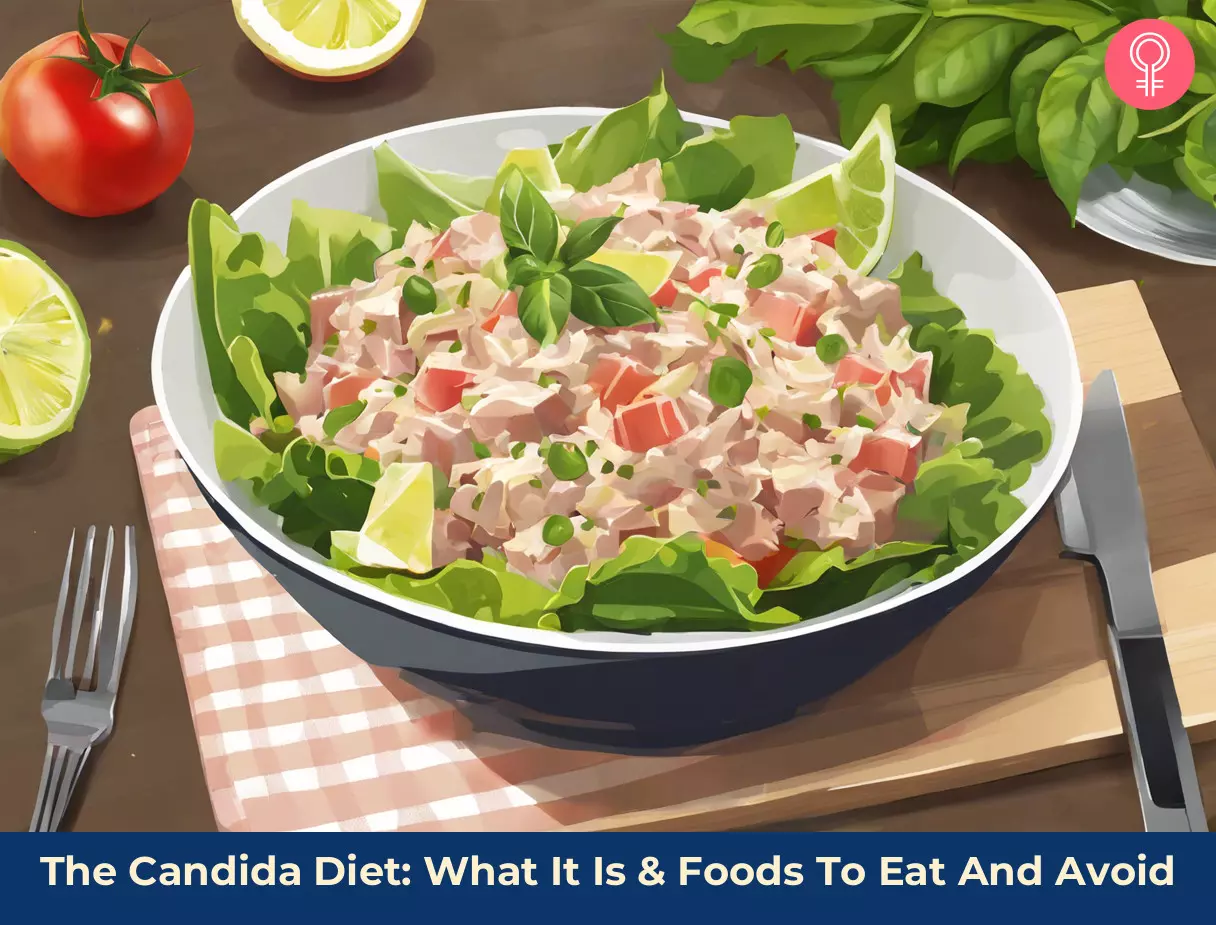
Image: Stable Diffusion/StyleCraze Design Team
While the Candida diet eases symptoms of Candida-related infections, its dietary guidelines may be complex for beginners. Check out this video for sample diet charts and interesting insights.
References
Articles on StyleCraze are backed by verified information from peer-reviewed and academic research papers, reputed organizations, research institutions, and medical associations to ensure accuracy and relevance. Read our editorial policy to learn more.
- Healthy Diet and Lifestyle Improve the Gut Microbiota and Help Combat Fungal Infection
https://www.ncbi.nlm.nih.gov/pmc/articles/PMC10302699/ - Data and Statistics on Candidemia
https://www.cdc.gov/candidiasis/data-research/facts-stats/?CDC_AAref_Val=https://www.cdc.gov/fungal/diseases/candidiasis/invasive/statistics.html - Gut Microbiota for Health: How Can Diet Maintain A Healthy Gut Microbiota?
https://www.ncbi.nlm.nih.gov/pmc/articles/PMC7700621/ - Probiotics Regulate Gut Microbiota: An Effective Method to Improve Immunity
https://www.ncbi.nlm.nih.gov/pmc/articles/PMC8512487/ - Changes in Diet and Lifestyle and Long-Term Weight Gain in Women and Men
https://www.ncbi.nlm.nih.gov/pmc/articles/PMC3151731/ - The role of diet as a modulator of the inflammatory process in the neurological diseases
https://pmc.ncbi.nlm.nih.gov/articles/PMC10057655/ - Refined carbohydrates, phenotypic plasticity and the obesity epidemic
https://pubmed.ncbi.nlm.nih.gov/31443772/ - Short-term impact of sugar consumption on hunger and ad libitum food intake in young women
https://www.ncbi.nlm.nih.gov/pmc/articles/PMC3627933/ - Association between Dietary Factors and Constipation in Adults Living in Luxembourg and Taking Part in the ORISCAV-LUX 2 Survey
https://www.ncbi.nlm.nih.gov/pmc/articles/PMC8746799/ - Whole Food-Based Approaches to Modulating Gut Microbiota and Associated Diseases
https://pubmed.ncbi.nlm.nih.gov/31951487/ - The Influence of the Gut Microbiome on Obesity in Adults and the Role of Probiotics, Prebiotics, and Synbiotics for Weight Loss
https://www.ncbi.nlm.nih.gov/pmc/articles/PMC7333005/ - Invasive Fungal Infections Acquired from Contaminated Food or Nutritional Supplements: A Review of the Literature
https://www.ncbi.nlm.nih.gov/pmc/articles/PMC5669373/ - Dietary Carbohydrates Modulate Candida albicans Biofilm Development on the Denture Surface
https://www.ncbi.nlm.nih.gov/pmc/articles/PMC3667795/ - Oat (Avena sativa) seed extract as an antifungal food preservative through the catalytic activity of a highly abundant class I chitinase
https://pubmed.ncbi.nlm.nih.gov/19224400/
Read full bio of Mary Sabat
- Mary Sabat, MS, RDN, LD, is a registered dietitian and a certified in personal training by the American Council of Exercise. She has 30 years of experience in nutrition education, wellness coaching, fitness training, holistic health, and weight loss coaching. She obtained her bachelor's degree in Dietetics and Nutrition from the University of Delaware and master’s degree in Human Nutrition with an emphasis on Exercise Science from Rutgers University.
 Mary Sabat, MS, RDN, LD, is a registered dietitian and a certified in personal training by the American Council of Exercise. She has 30 years of experience in nutrition education, wellness coaching, fitness training, holistic health, and weight loss coaching. She obtained her bachelor's degree in Dietetics and Nutrition from the University of Delaware and master’s degree in Human Nutrition with an emphasis on Exercise Science from Rutgers University.
Mary Sabat, MS, RDN, LD, is a registered dietitian and a certified in personal training by the American Council of Exercise. She has 30 years of experience in nutrition education, wellness coaching, fitness training, holistic health, and weight loss coaching. She obtained her bachelor's degree in Dietetics and Nutrition from the University of Delaware and master’s degree in Human Nutrition with an emphasis on Exercise Science from Rutgers University.
Read full bio of Payal Karnik
Read full bio of Ravi Teja Tadimalla
Read full bio of Aparna Mallampalli









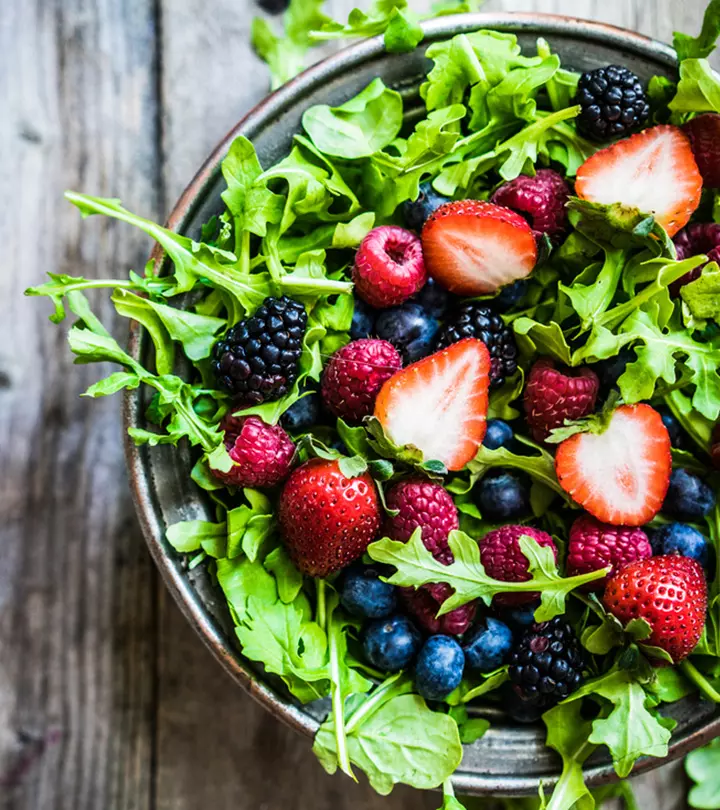
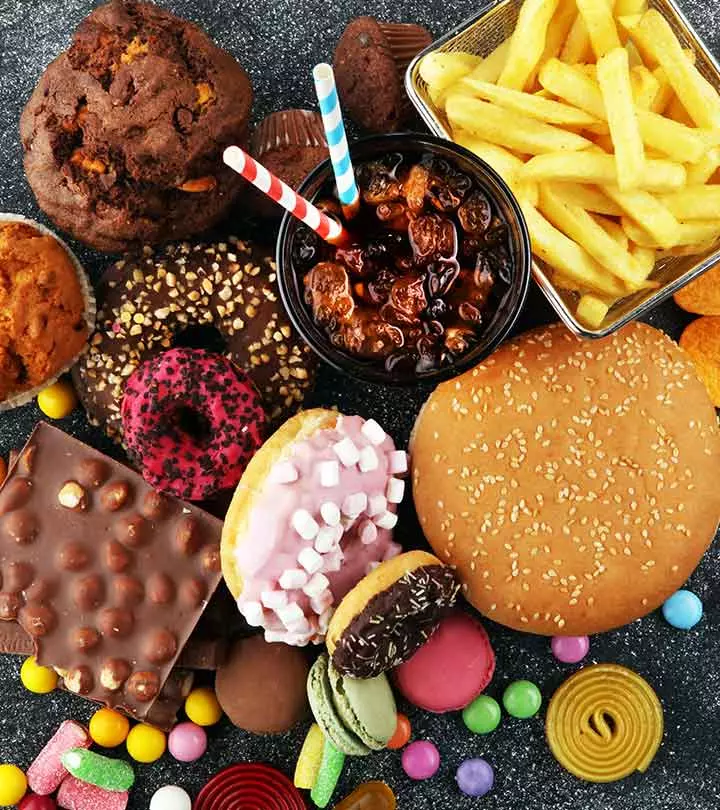
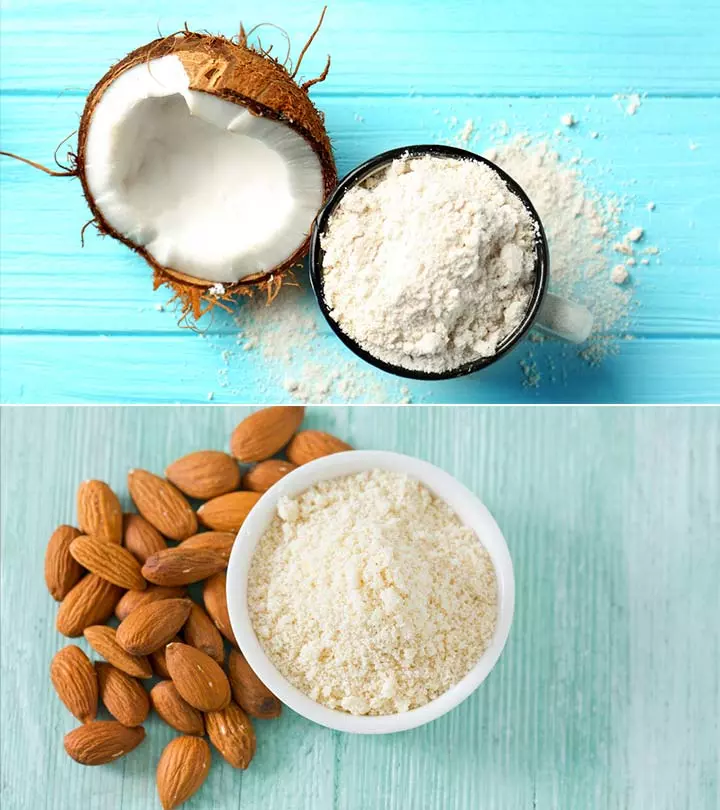
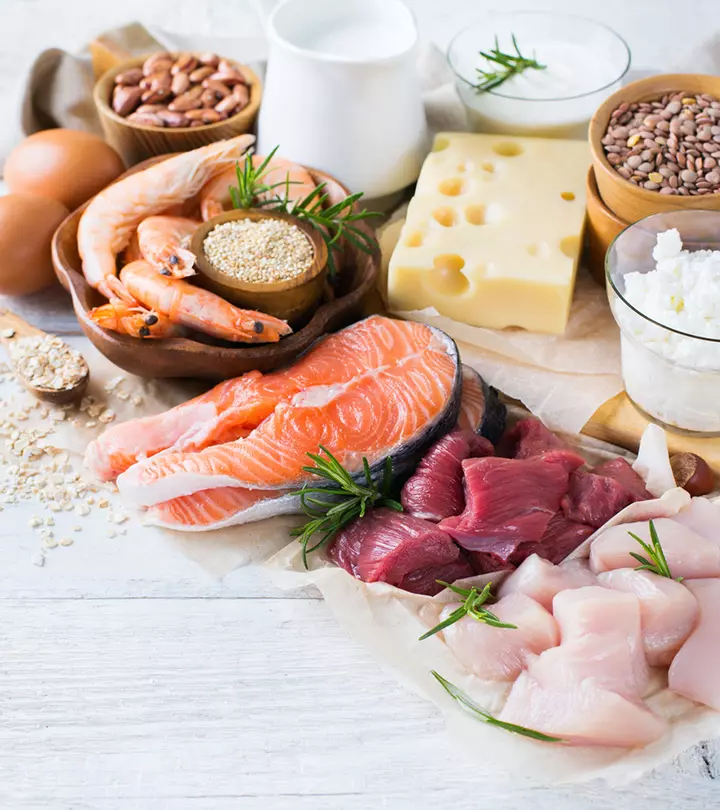

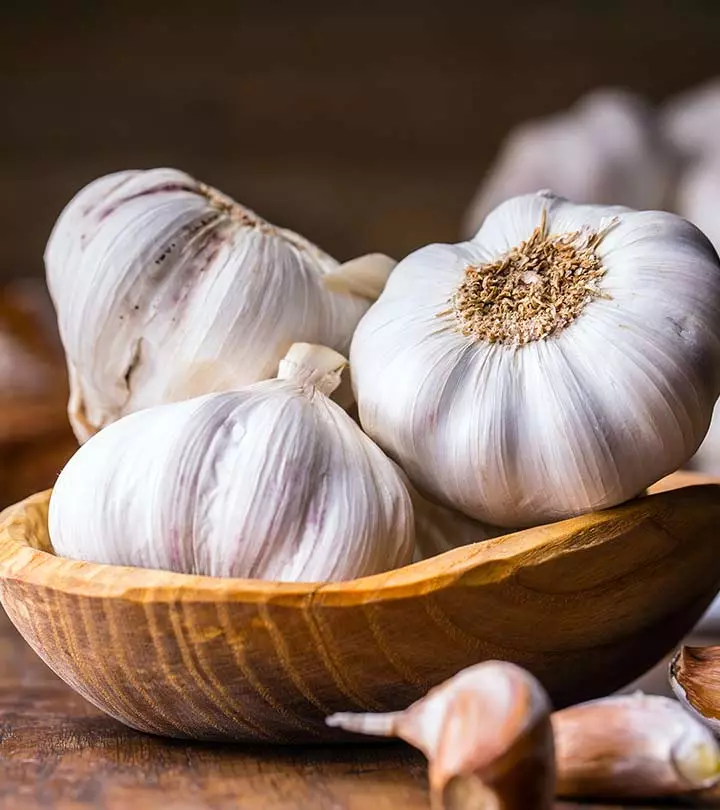
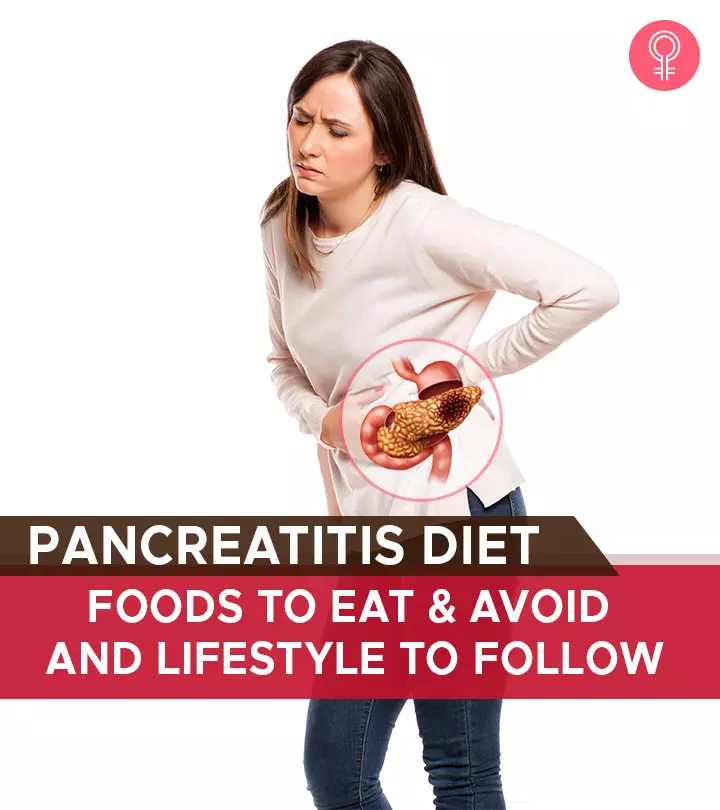
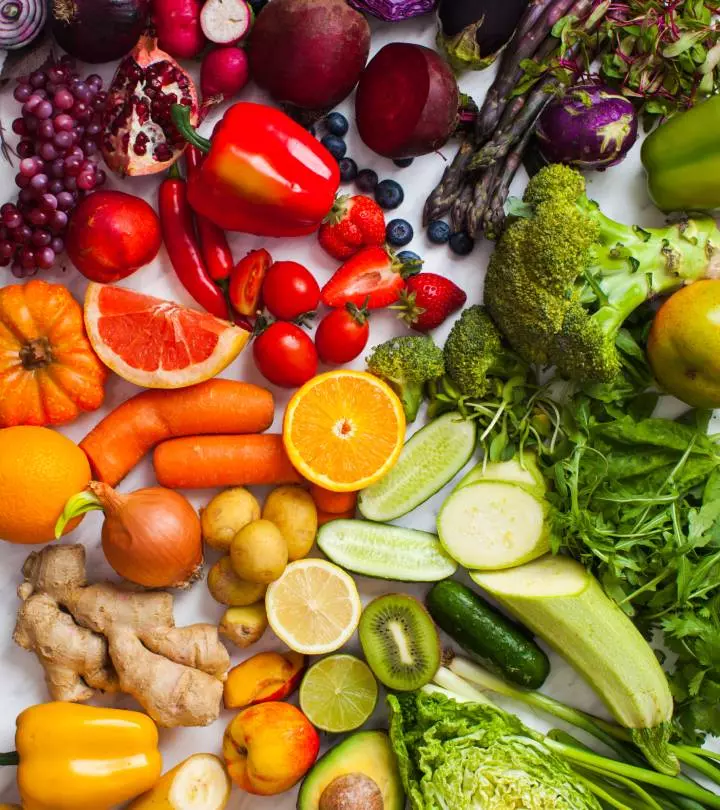


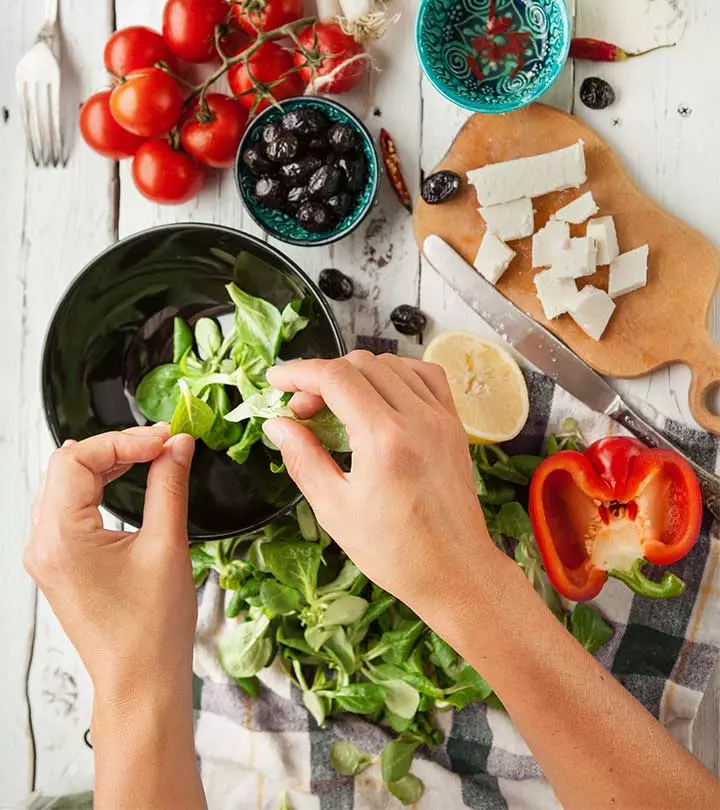

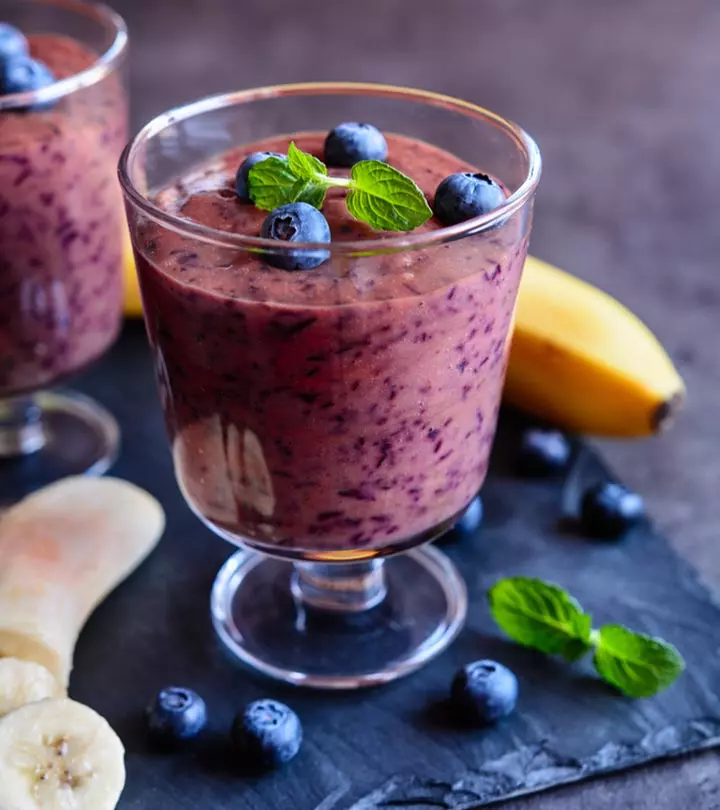
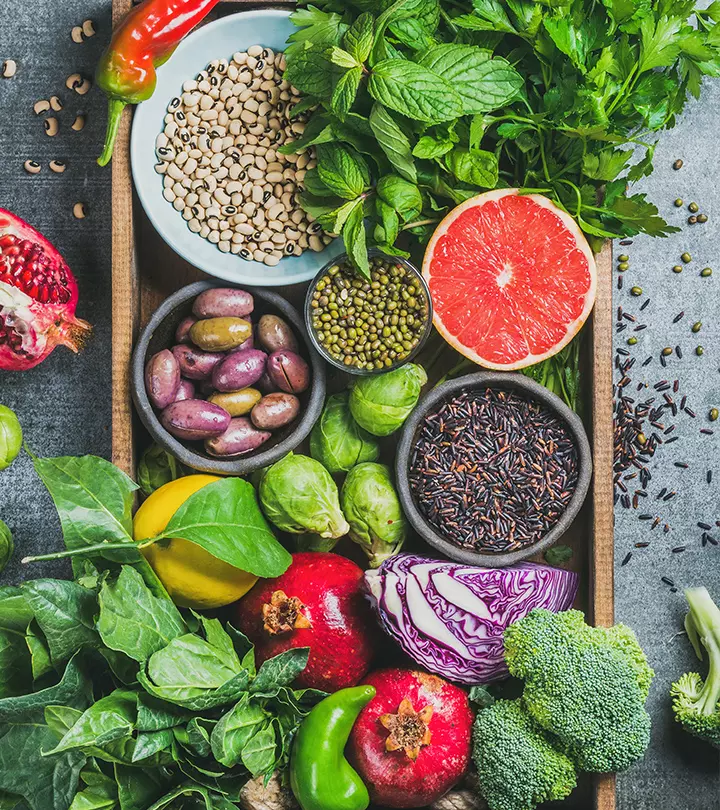
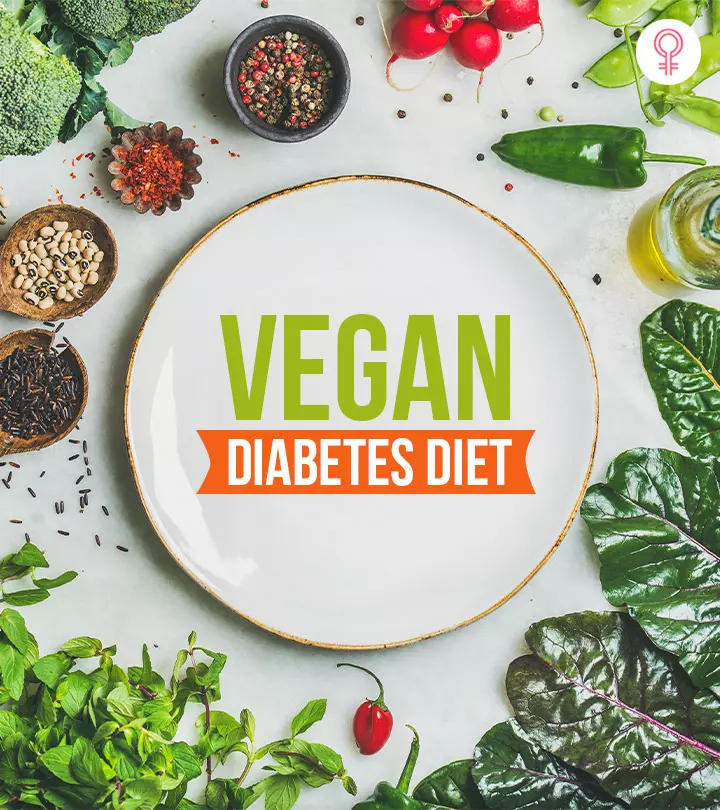

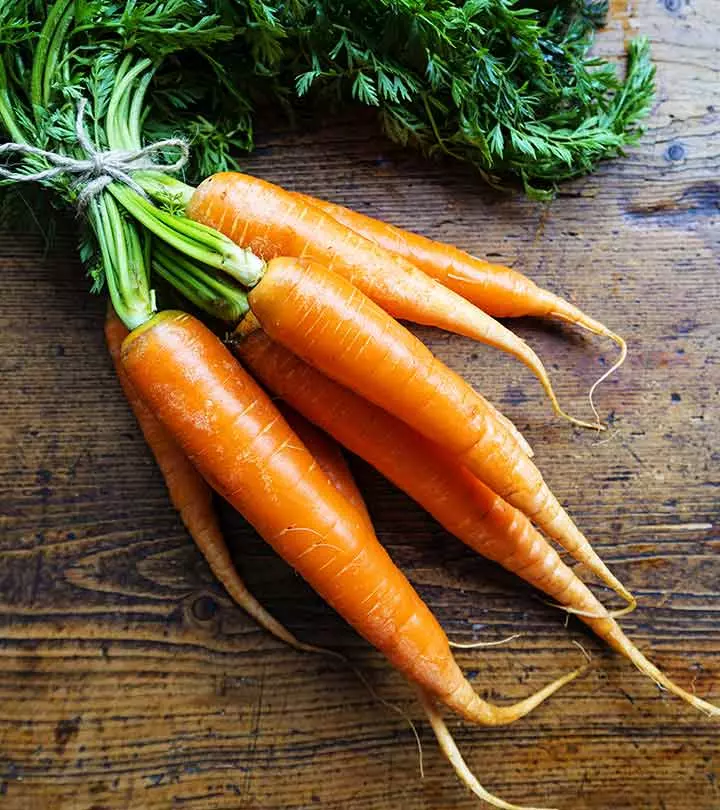

Community Experiences
Join the conversation and become a part of our empowering community! Share your stories, experiences, and insights to connect with other beauty, lifestyle, and health enthusiasts.